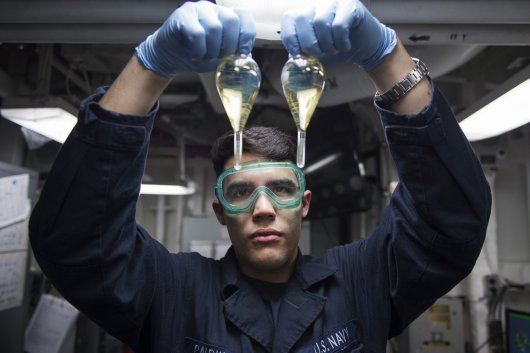Global sulphur levels for residual fuels rose to six-year high in 2017: MEPC
Average annual sulphur content increased to its highest level since 2011, according to data.
The International Maritime Organization's (IMO) Marine Environment Protection Committee (MEPC), at its 72nd session held in London last week, noted that both the annual and three-year global average sulphur content for tested residual fuels was higher in 2017 compared to the previous year.
The data showed that annual sulphur levels had risen from 2.58% to 2.60% between 2016 and 2017 - the highest since 2011, whilst the three-year average rolling figure increased from 2.50% to 2.54% - a five-year high.
A summary of the findings has been provided below.
As Bunker Index previously reported back in February, Veritas Petroleum Services (VPS) said it had seen a 33% increase in bunker alerts related to residual fuels last year, compared to 2016.
Overall, in 2017, the company issued the highest number of bunker alerts since the peak of 2014.
The data showed that annual sulphur levels had risen from 2.58% to 2.60% between 2016 and 2017 - the highest since 2011, whilst the three-year average rolling figure increased from 2.50% to 2.54% - a five-year high.
A summary of the findings has been provided below.
| Year | Annual (%) | 3-Year Rolling (%) |
| 2017 | 2.60 | 2.54 |
| 2016 | 2.58 | 2.50 |
| 2015 | 2.45 | 2.45 |
| 2014 | 2.46 | 2.47 |
| 2013 | 2.43 | 2.53 |
| 2012 | 2.51 | 2.59 |
| 2011 | 2.65 | 2.62 |
| 2010 | 2.61 | -- |
| 2009 | 2.60 | -- |
As Bunker Index previously reported back in February, Veritas Petroleum Services (VPS) said it had seen a 33% increase in bunker alerts related to residual fuels last year, compared to 2016.
Overall, in 2017, the company issued the highest number of bunker alerts since the peak of 2014.

|
Swedish biomethane bunkered in Gothenburg
Test delivery performed by St1 and St1 Biokraft, who aim to become large-scale suppliers. |
|
|
|
||

|
Cockett to be closed down after 45 years
End of an era as shareholders make decision based on 'non-core nature' of Cockett's business. |
|
|
|
||

|
Petrobras confirms prompt availability of VLS B24 at Rio Grande
Lead time for barge deliveries currently five days. |
|
|
|
||

|
IMO approves pricing mechanism based on GHG intensity thresholds
Charges to be levied on ships that do not meet yearly GHG fuel intensity reduction targets. |
|
|
|
||

|
VARO Energy expands renewable portfolio with Preem acquisition
All-cash transaction expected to complete in the latter half of 2025. |
|
|
|
||

|
NYK trials biofuel in milestone coal carrier test
Vessel is used to test biofuel for domestic utility company. |
|
|
|
||

|
H-Line Shipping orders LNG bunkering vessel
Vessel with 18,000-cbm capacity to run on both LNG and MDO. |
|
|
|
||

|
How to engineer and manage green shipping fuels | Stanley George, VPS
Effective management strategies and insights for evolving fuel use. |
|
|
|
||

|
Swedish government bans scrubber wastewater discharges
Discharges from open-loop scrubbers to be prohibited in Swedish waters from July 2025. |
|
|
|
||

|
MAN Energy Solutions achieves 100% load milestone for ammonia engine
Latest tests validate fuel injection system throughout the entire load curve. |
|
|
|
||
Related Links
- · PPR6 to develop Arctic HFO ban as nations urge 2021 implementation [Insights]
- · IMO agrees historic deal to cut carbon in shipping sector [Insights]
- · A 2017 review of VPS bunker alerts [Insights]
- · Historical review of VPS Bunker Alerts: Steve Bee [Insights]

